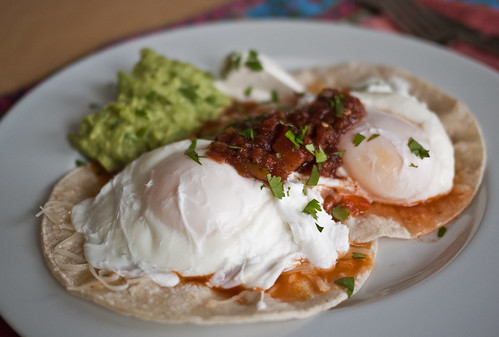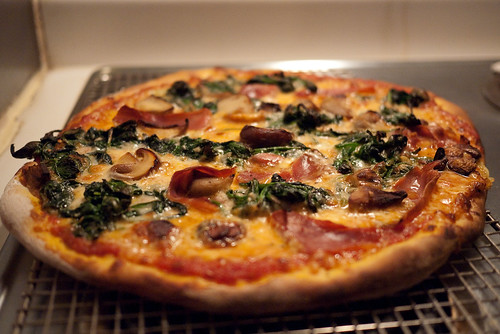When making a stew or other braised dish such as osso bucco it is important to brown the meat first. That’s a basic step that almost everyone knows, and even if you don’t know it, the recipe always says to do so. That said, it isn’t always understood why it is important to brown the meat. In fact, it is often incorrectly stated as being to “lock in the juices” or “seal in the flavour.”
That’s not why you brown the meat.
Browning the meat does not lock in the juices or seal in anything. You’re browning it for pete’s sake, not shellacking it! The crust you form is not even remotely “juice proof.”
The reason why you brown the meat is to build flavour and to create a fond. Browned meat, when browned correctly, is lightly caramelized (or, to be precise, it undergoes a Maillard reaction), which means the sugars in the meat are transformed into very flavourful yummyness. This yummyness not only affects the individual morsel of meat, it flavours the entire dish.
You’ll notice that after browning the meat there will be some dark bits stuck to the bottom of the pan. This is the fond, which is French for “OMG this is what gives my stew a deep and meaty flavour!” You release the fond by “deglazing” with wine or some other liquid such as stock or even water, and it then becomes part of the braising liquid.
The main implication of this lesson in browning meat is that you no longer have to worry about obsessively getting all six sides of your cubes of meat evenly browned. Yes, some people are obsessive about that, turning the cubes over and over, afraid that an insufficiently browned edge will cause the juices to leak out or the flavour to not be “sealed in.” Good news: it’s not an issue. You don’t have to worry about it.
Here are a few browning tips:
- The meat should be dry. It doesn’t have to be bone dry, but it shouldn’t be dripping with water or thawing juices. Pat dry with a paper towel if necessary.
- Don’t use a non-stick pan. You get much better browning from stainless steel, cast iron, or enamel.
- Don’t over-heat the pan. The meat should make a brisk sizzle when you add it to the pan, but it shouldn’t sound like a supersonic jet flying over. If the pan is too hot, the fond will burn, giving your stew a bitter flavour.
- Don’t crowd the pan. Brown in batches if you have a lot of meat. You want each piece of meat to have some elbow room in the pan, which helps moisture escape. If the pan is too crowded, the moisture will accumulate in the pan and you’ll end up steaming or boiling the meat, neither of which will brown it or create a fond.
- Don’t move it around too much. You’re browning, not stir-frying. Let each piece sit still for a minute or so before you turn it over.
- Remember, you’re browning, not graying. If your heat is too low, or if the meat is too wet, or if you over-crowd the pan, then your meat will lose its pinkness but it’s not really browning. It’s going gray, not brown.
- If the meat sticks, take the pan off the heat for a few seconds and the stuck pieces will let go. (This tip applies any time food sticks to a pan, not just when browning.)
- If you are using floured meat, make sure you shake off the excess flour and don’t turn the heat too high. Otherwise you’ll end up with a pile of foul tasting carbonized flour at the bottom of the pan.
- Slow cooker recipes usually don’t call for browning the meat, but that’s because they don’t want to disillusion you of how convenient the slow cooker is. If you have a few minutes, try browning the meat in a pan first, and deglaze the fond and add the liquid to your slow cooker. It should make that recipe you like that much better. (But I understand why it might not be something you want to do at 7:00 AM while rushing to get ready for work.)
- And finally, don’t worry about getting every side of your meat cubes perfectly browned! If two or three sides have a good browning, that’s enough.
Enjoy your stew!

